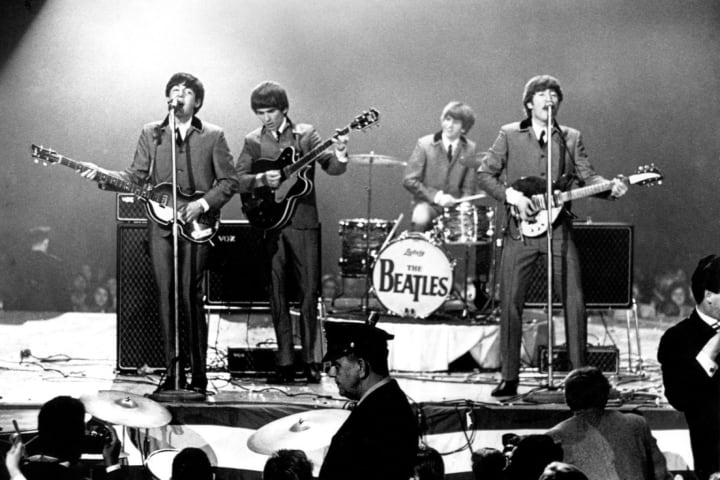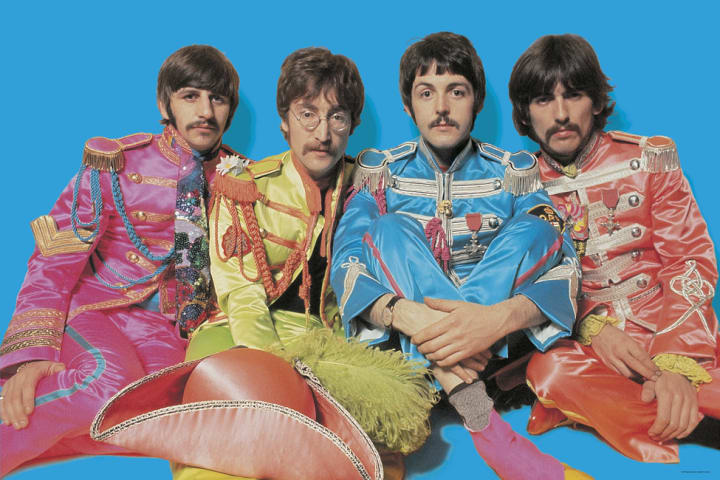By just looking at photos of the Beatles through the 1960s, one can immediately grasp what the decade was about.
From the very start of their journey as musicians, you could tell the Beatles were different. Standing proudly at the top as one of the very first ever bands to write their own music, their fashion was what truly made them stand out from the rest.
It all started in Hamburg, Germany during 1960. After being taken to Hamburg along with a group of other British bands by Allan Williams, the Beatles began their residency at the Kaiserkeller and the Indra. Through 8-hour shifts they played multiple sets through and became a tighter sounding band. They would take the stage dressed as “teddy boys” – adorning tight leather suits, cowboy boots and long sideboards with hair piled on top of their heads. It wasn’t until they met Astrid Kirchherr that they ditched the greased back hairdos. Astrid was a photographer that befriended the band along with her friends Klaus Voormann and Jürgen Vollmer. She would end up taking some of the first photographs of the original band.
They came to Germany dressed as teddy boys and left having adapted German art student’s style. The Beatles had become close with the small group and being engrossed in the art scene cut their hair to the style that would be known as the “mop-top.” The hairdo was named because of its resemblance to a wet mop and was one of the things the Beatles would become pop-culturally known for. Once the Beatles arrived in America, manufacturers created Beatle wigs and barbers were swamped with young boys wanting the look.

When manager Brian Epstein came along in 1962, he made sure to clean up this greasy group of boys completely so record companies would take them seriously. The leather was traded in for custom-made Pierre Cardin suits with collarless necks, slim trousers, skinny ties and black-heeled Chelsea boots that would essentially become what it meant to be a Beatle. “I remember so vividly showing up at a show and you’d be in your ordinary clothes. And then you’d take out of your little suitcase your suit and your shirt and put them on. And then finally your ‘Beatle boots’ and you’d stand up and you just looked at each other like ‘yeah, there we are.'” Establishing their signature style as a band set the tone for other bands through that decade. Once the Beatles wore their Edwardian collarless suits to concerts, it became a staple with the mod youth of the ‘60s.
Although the suits were a way to tidy their appearance, the band themselves were quite mischievous. In a way, the Beatles were the perfect contradiction. They cleaned up, but continued to grow their hair and could care less about what the general public would think of them, which is what made them so appealing to youths at that time. They were rebellious. As portrayed in the movie A Hard Day’s Night – essentially a glimpse of a day in the life of the Beatles – they engage in a variety of shenanigans in the heat of the moment despite their dress at the time. They couldn’t be bothered to listen to authority because they were the Beatles.
They also had a way of talking to the press that was witty and frank that the press grew to love. By the end of their first trip to America in 1964, they had the press eating out of their hands. On the train ride from New York to Washington, D.C. for a show, the Beatles travelled with the press and made the storyline of A Hard Day’s Night come to life. George dressed up as a waiter for a gag and John and Ringo let their exuberant personalities shine, all of which can be seen in The Beatles: The First U.S. Visit.

Of course, as they grew up and their music changed, their wardrobe did as well. Mop-tops, custom-made suits, and Beatle boots defined the early 1960s, but loud colours and bold prints brought forth 1967. The year was most notably known as the “Summer of Love” and with 1967 came the introduction to the Beatles’ most historic studio album. The lustrous cover of Sgt. Pepper’s Lonely Hearts Club Band shows the Beatles adorned with bright-coloured military costumes amid a sea of their idols. They were trendsetters of the hippie movement and essentially anticipated it before it even happened.
The Beatles defined the psychedelic, peace and love movement of 1967. Men began to dress with a more flamboyant nature, which included floral shirts, velvet jackets, bright colours and paisley scarves. The recordings of Sgt. Pepper’s started in late November after Paul McCartney had the idea that just because the band was not touring anymore, it did not mean the album could not go on tour. And thus, Sgt. Pepper’s was born and the hippie movement that followed was an experimental time filled with drugs, love and peace.

By the time the turn of the decade came around the Beatles’ look was tame once again, but yet still so different. Although they became more individualistic style-wise during the latter half of their career, they did however have signature looks. John’s trademark round, thin-rimmed “tea-shade glasses” became a staple in almost every musician’s closet and are still primarily known by his name. The Abbey Road cover is also a great example. Each Beatle exemplifies their own sense of style; especially George wearing denim-on-denim and John dressed in white from head-to-toe. During a new segment for Rolling Stone discussing 50 years of fashion, Joe Levy said it best:
“I don’t have to cut my hair. I don’t have to look the way you want me to look. And just in that moment, they clean up what they’re wearing, but the hair gets longer and that combination freaks people out. Now just look at the time-lapse of the Beatles from that moment they’re in those matching suits and the mop-tops and they begin to hit the swinging ‘60s. And they take psychedelic drugs and they start to wear brightly coloured clothes. Then they begin to get into mysticism […]. Just look at those four guys. You can see something somewhat normative becoming transgressive, becoming psychedelically lit from the inside by the drugs, becoming spiritual and withdrawn. And that’s the story of the ‘60s as it heads into the ‘70s.”
By just looking at photos of the Beatles through the 1960s one can immediately grasp what the decade was about. You can see so much of the story of culture in the ‘60s. The Beatles instigated their own revolution, in their music, fashion and life. They set the bar for others and surpassed it along the way to being the most influential band of all time.
If you have not already read part two, it can be viewed here:

